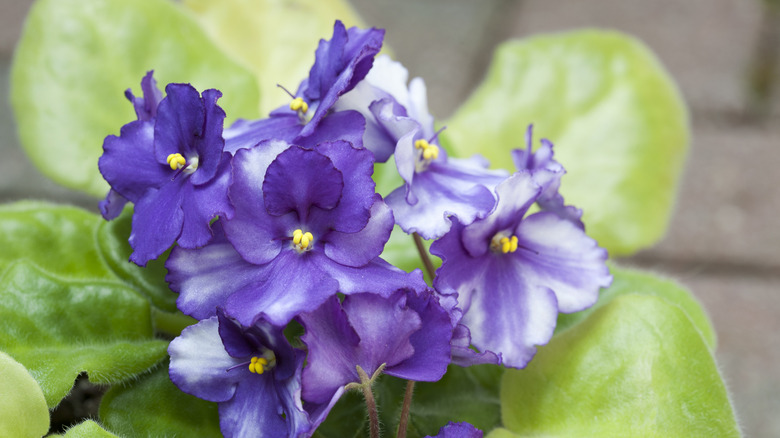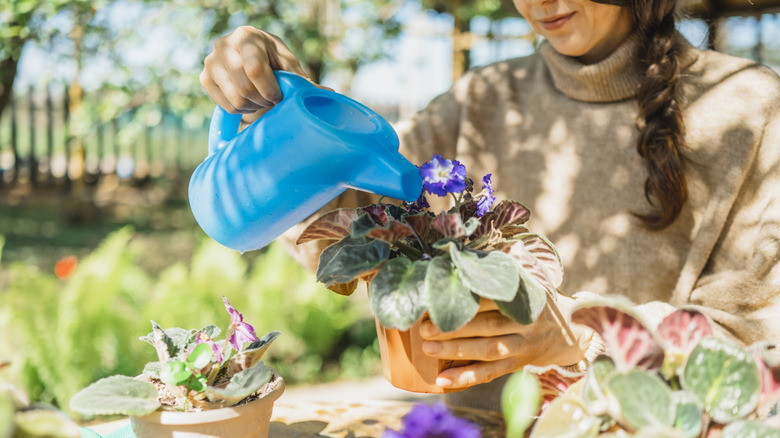Encourage More Blooms On Your African Violets With These Tips
With soft green leaves and delicate purple blooms, African violets (Saintpaulia ionantha) add a splash of sophistication to any house. But for much of the plant-loving public, encouraging these delightful flowers to bloom can seem a bit tricky. Perhaps your violets have gone weeks, or even months, without producing those vibrant petals. But you can rest assured that their reluctance isn't a permanent issue. Light, humidity, nutrition, and proper watering all play essential roles in unlocking the plant's potential. Avoid making these crucial mistakes with your African violet and tweak your care routine to encourage a hesitant plant to flower more.
To successfully grow African violets you should start by ensuring that your plant has the appropriate type and amount of light. African violets prefer bright, indirect light, like soft beams tumbling in an east-facing window. Excessive exposure to direct sunlight can burn their leaves, while insufficient light prevents blooming. For constant light, you might want to supplement with fluorescent grow lights. Pot size is another factor that can directly impact blooming. African violets enjoy being slightly root-bound, so select a pot that's no more than one-third the diameter of the plant. This helps the plant direct its energy into flowering instead of root growth.
Practical steps to enhance flowering
The ideal environment is more than just light and pot size. African violets prefer a fairly humid environment, generally around 80% humidity, as this closely resembles the conditions they are naturally accustomed to in the rainforest. The humidity can be improved by putting the plant on a tray filled with pebbles and water so that the pot sits above the waterline. The lack of blooms is also a sign that you need a humidifier in your home, and small room humidifiers can work wonders for your plants. Use a water-soluble fertilizer formulated for African violets. Once the growing period kicks in, feed your plant every two weeks until the plant goes dormant, at which point you can reduce the volume, as over-fertilizing can also be a problem.
Precision is also important when it comes to watering. Use lukewarm distilled or tap water because cold water can shock the roots. Water from below by setting the pot in a tray of water for 20 to 30 minutes to allow the soil to soak up moisture through the drainage holes. This technique stops water from pooling up on the leaves, which causes spotting or fungal problems. Temperature is key to that as well. African violets prefer their environment to stay within a range between 65 and 75 degrees Fahrenheit. Keep them away from drafts, heaters, and air conditioners — fluctuating temperatures can stress the plant, causing it to drop buds or cease blooming completely.

